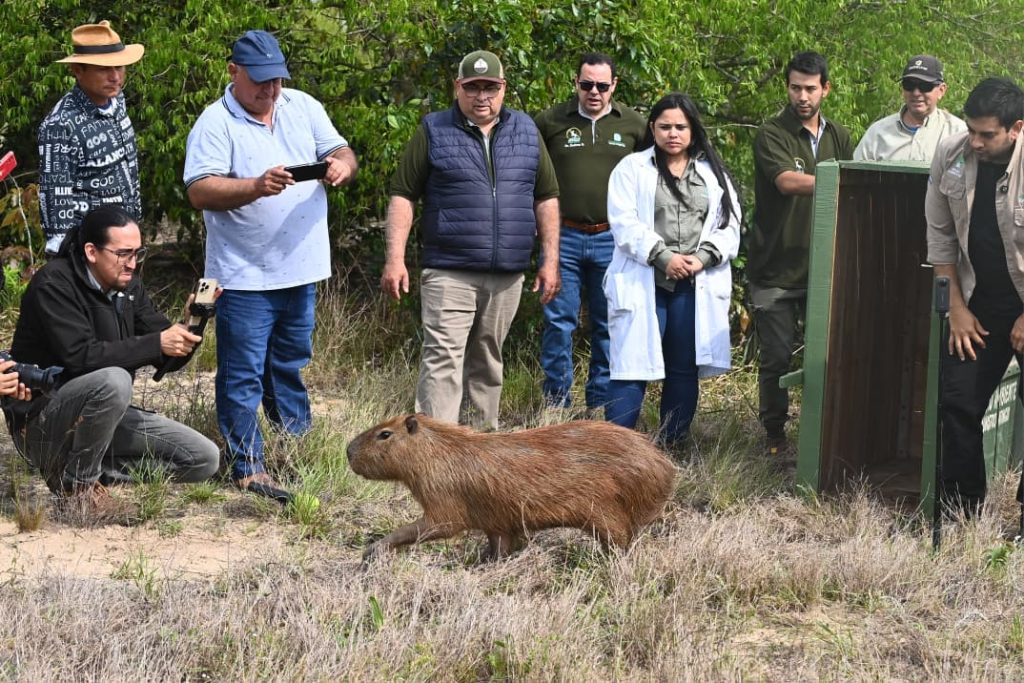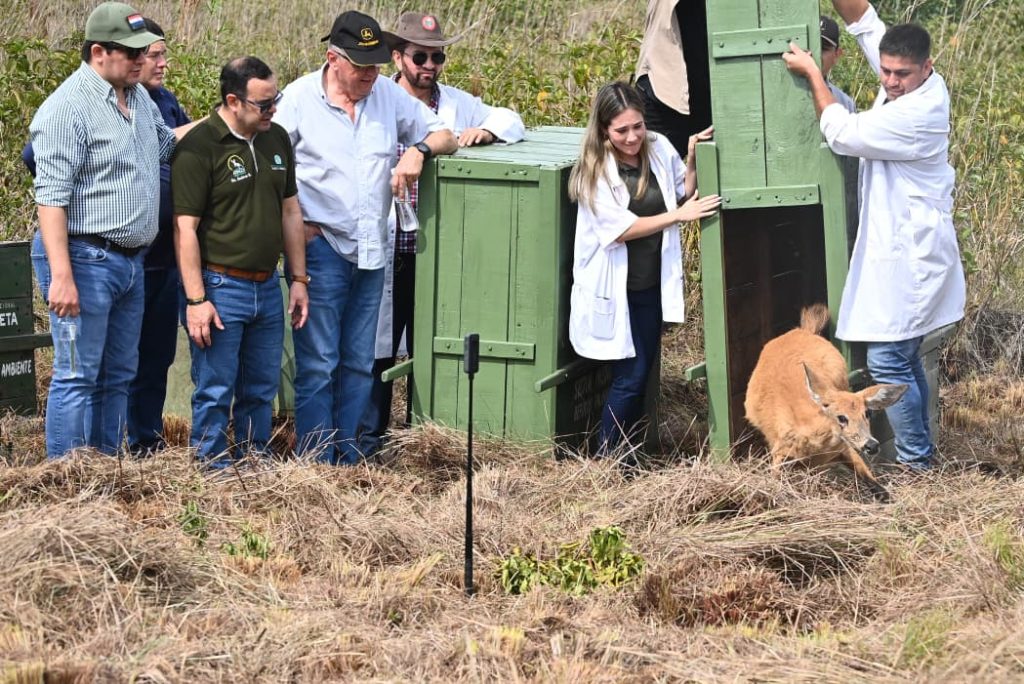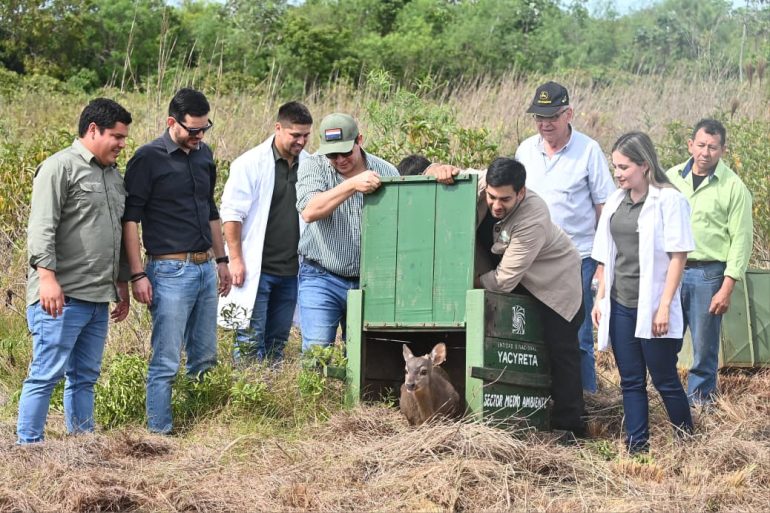For the second year in a row, the Yacyretá Binational Entity reintroduces captive-born wild native species. The animals will be released to the nature reserves under the institution’s care. These wild species were in the care of the Atinguy Wildlife Refuge. The aim is to return to the wild the descendants of the animals that originally inhabited the areas affected by the formation of the hydroelectric plant reservoir in Southern Paraguay. Yacyretá’s release programme operation took place in Ayolas, in the Misiones Department.
Animals returned to nature
The reintroduction started with two swamp deer, also named guasu puku. These two animals were raised at the refuge. Two mountain turkeys or mytu were reintroduced as well. Both species are endangered. Two capybaras, four rheas, and two deer were also released in nature. A tirica was also reintroduced. The animal had been rescued injured and, after undergoing appropriate treatment, is now back in the wild. Last year, jaguars, guan, wild turkey, overo caiman, and maned wolf were released by the Yacyretá Binational Entity.
After the release, a monitoring and surveillance process for the animals begins, following a protocol and with support from the Ministry of Environment and Sustainable Development.
The release of the animals was coordinated by attorney José Alvarenga, Head of the Environment Sector, and biodiversity and reserve technicians. The release was also followed by councillors Dr. Michel Flores, Dr. Miguel Olmedo, and Engineer Germán Gneiting.
Yacyretá’s release programme after 40 years
Alvarenga put emphasis on the fact that after 40 years, they are finally releasing wild animals. Due to the construction of the plant, there was no place for the animals to thrive before today. He also mentions the timing, being days ahead of Animals’ Day, happening on 4 October each year.
Alvarenga also noted that this achievement was possible with the support of the director, Luis Benítez Cuevas, and the members of the Board of Directors. He especially highlighted the technical staff of all the Environment Sector programs, who worked on the project with a strong sense of belonging and responsibility.


Atinguy Wildlife Refuge
The Yacyretá Binational Entity established the Atinguy Wildlife Refuge on a 100-hectare property in 1982. The refuge is located 18 km from Ayolas, on the road that connects the city with San Cosme y Damián. The objectives are to breed, reproduce, and conserve the wildlife and vegetation found on the site.
The goal is also to establish a captive breeding programme for endangered species, creating the necessary physical and biological conditions. Furthermore, to promote environmental education, awareness, appreciation, conservation, and research on wildlife through brochures, posters, and talks.
Mammals, birds, and reptiles
The refuge’s zoological collection consists of mammals, birds, and reptiles. These animals inhabit the area of influence of the dam and are also imported from other regions of the country. The animals are distributed in cages, pens, and free-roaming areas suitable for each species, allowing them to be observed, raised, and reproduced. The cage area has walkers guided by interpretive signs indicating the route. In addition, each cage has signs indicating the common and scientific names of each species and their main characteristics.
The refuge also has an educational, scientific, and touristic purpose, being open to people. For more information, follow the Yacyretá Binational Entity on Instagram.
Read more: Itaipu Environmental Centre Welcomes Capybaras In Exchange Programme.


